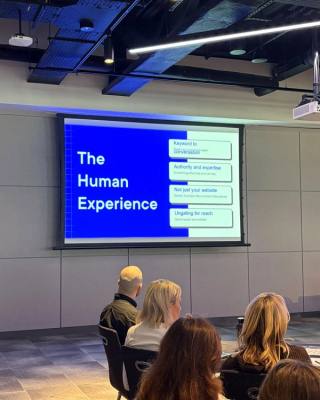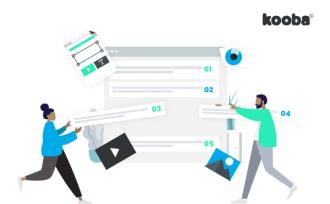Anyone who has ever worked in an agency knows the old line: “Fast, cheap, good - choose two”.
It never goes out of fashion because it does speak to a central truth about the impossibility of having it all. And let’s be honest, we’ve all met clients who assume they can have all three and are confused when it turns out that’s not going to happen.
But I wonder how often we interrogate that line to ask which two we WOULD choose if we could? I think the answer is obvious. I would choose cheap and good every time. (At this point in the article I am contractually obliged to point out that cheap and good isn’t possible either. But you get the idea.)
Why would fast be first to go? Well, for several reasons, but most importantly because I genuinely believe that projects allowed to take place over months rather than weeks almost inevitably produce superior results - even if no additional resources are actually involved.
In the rest of this post I am going to look at why that might be the case. But first, let’s talk a little about where the need for speed comes from.
Can I have that yesterday?
Most of our clients want things done quickly, and we do our very best to make that happen. Our job, after all, is solving problems rather than adding to them. However, as the relationship deepens a different rhythm emerges.
What we see is that these clients really appreciate predictability rather than speed. It isn’t about getting something done in a short space of time, but knowing when it will be done and hitting the deadline every time. After all, in these relationships we see things coming down the tracks and surprises are kept to a minimum. So for example, if the client needs a new range of landing pages for a paid media campaign launching on date x, we are already scoping that project on x-60 days.
The truth is, “fast” isn’t necessary if the client and agency are well aligned and have clear visibility down the line. So if you do find yourself constantly using the phrase “as soon as possible” the first place to look it your own planning processes.
Whilst things inevitably change, have a plan for the next six months ahead, understand WHY any given item is on the plan, and carefully interrogate any urgent desire to amend that plan.
As we all know, urgent and important are not the same thing, and the former often actively gets in the way of the latter. When that happens to you, you’ll suddenly find you have an awful lot of job you need done very quickly indeed.
Taking these simple steps should mean a dramatic reduction in ‘I need it yesterday’ scenarios. That means less stress but it also means better work. Let’s look at why.
Why slow and steady wins the race
I am firmly of the belief that it helps to take plenty of time over any given web project - even if it could be completed in a shorter space of time than you allow.
This isn’t just a matter of having enough time to do the job right, although that is certainly important. It’s about providing the space for decisions and feedback to be properly considered and socialised around the client organisation.
Why do we need that space? I would say there are three core reasons:
1. Requirements gathering takes time
Large and even small organisations are complicated things. It is often difficult to ascertain whether they have a single opinion on even simple matters, never mind something as wide-ranging and subtle as an extended online presence.
In other words, it takes a lot of time and back and forth to really understand the requirements of a project. Sure, we kick things off with a workshop, but so much of this initial process is about communication: establishing channels within the organisation and letting it happen. That isn’t something that we can ‘speed up’.
We need to go at a pace that allows back and forth of thought and ideas. Attempting to ‘sign off’ requirements on the day only leads to trouble down the road. One practical way to give more time for reflection is to include user and prospect interviews in the process and perform a competitive analysis. Whilst we are away working on these, communication channels within the client can do their job
2. Time allows for reflection
A similar principle applies throughout the project itself. It is essential to allow realistic amounts of time for meaningful feedback and - where necessary - changes in direction. Railroading agreement helps nobody and leaves unhappy clients in its wake.
There are a couple of reasons we need this time. Firstly, whether we like it or not you’ll only REALLY get feedback when clients see something close to a final design in front of their eyes.
Don’t get me wrong, we are 100% committed to wireframing and we work hard to ensure all our clients understand what signing off on this stage means. But that doesn’t change the fact: things change when a client sees something ‘real’.
When that happens, we believe it is important to not be ‘that’ agency (the one that points to previous sign-offs and refuses to adapt to new requirements without increasing the budget or pushing the delivery date). Instead we look to be flexible. And that needs time.
This happens at every key moment in the process. We need breathing space to allow all stakeholders to have a clear feel for where the project is at, and confirm they are happy to keep moving. It delivers better final product and keeps everyone happier all round.
3. Time gets things right
If you do things quickly, you will find that many people - stakeholders, employees, partners, customers and prospects - can’t keep up.
That is why we like to involve these groups wherever possible. But it is also why time is required to give breathing space and provide room for informed debate. I say informed because as noted above, there are often many decision makers and stakeholders who are not in the room - and never will be, no matter how much it would suit the agency.
Providing enough time to really work through a process enables decisions to be taken without artificially imposing a (usually spurious) aggressive deadline that only encourages everyone involved to default to the fastest / easiest option whenever a decision has to be made.
Your website - and extended online presence - is too important to allow that approach. Give it time.








